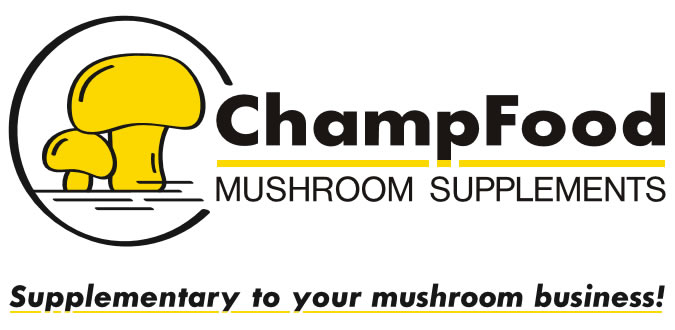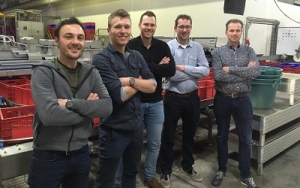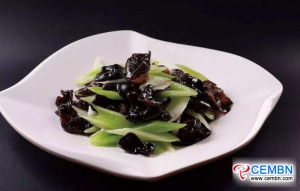
Mushroom Matter
Welcome on our platform. Why MUSHROOM MATTER? Because mushrooms play an important role in our lives as well in business. Our goal is to bring the world the very latest mushroom news with the upmost care to support the positioning of our beloved Mushroom.
Study club mushrooms kicks off
Bright 5
Bright 5 was founded about a year ago. This unique collaboration between growers, companies, education and government represents five sectors with a strong base in the Southeast Netherlands: blueberries, strawberries, asparagus, mushrooms and arboriculture.
Bright 5 is a project in which five sectors initiate, implement and share cultivation-related innovation for five years by the entrepreneurs themselves. Centrally located in the region, from Brightlands Campus Greenport Venlo, Bright 5 brings together more than 180 entrepreneurs and creates crossovers within the five sectors in the field of research and innovations in green crop protection, vital soil, big data, vital plant, residual flows and cultivation-related ingredients. The unique collaboration between growers, companies, education and government takes research & development to a higher level, strengthens the position of the five sectors and brings innovation back to the region.

Study Club Mushrooms
Partly due to the disappearance of the product boards and the Mushroom Cultivation Test Station, the mushroom sector is in need of collective research.
Thus, March 4, 2020, the Study Club Champignons has been formalized. This is a study group of 5 enthusiastic mushroom growers from Limburg and Brabant (Dennis Cox - Cox Champignons, Robbert Jacobs - Jacobs Champignons, John Jacobs - Champignonkwekerij Jacobs, Pieter van den Boomen - Champignonkwekerij Gemert and Thijs Claassen - Claassen Champignons), which serve as a sounding board to carry out practical, applied research in the mushroom sector.
Participant Dennis Cox of Cox Champignons explains: "Innovation is a precondition for a company to maintain its value."

Studies
The following 4 studies will be started in 2020:
- Alternative to formalin (vital soil)
- Biological control of mushroom fly and mosquito (green crop protection)
- Biological control moles (vital plant)
- Re-use champost (value residual flows)
Field trips
In addition, 4 excursions are organized at different companies on the Brightlands Campus Greenport Venlo. Through these excursions, the study group is inspired and included in the objectives of the campus in the field of healthy food, future farming and bio-circular economy.
Beijing Fengtai market: analysis of mushroom price
According to mushroom quotation provided by Beijing Fengtai Agricultural Products Centre Wholesale Market, on March 18, Shiitake mushroom, Superior Shiitake mushroom, Pleurotus cornucopiae, Pleurotus geesteranus, King oyster mushroom, Drumstick mushroom and Agrocybe cylindracea are 7 varieties that show price fall.
1.Price of Shiitake mushroom has dropped from 8 to 7 CNY per kg, indicating 12% of decline range.
2.Price of Superior Shiitake mushroom has dropped from 20 to 16 CNY per kg, indicating 20% of decline range.
3.Price of Pleurotus cornucopiae has dropped from 10 to 9.2CNY per kg, indicating 8% of decline range.
4.Price of Pleurotus geesteranus has dropped from 12 to 10 CNY per kg, indicating 16% of decline range.
5.Price of King oyster mushroom has dropped from 9 to 7 CNY per kg, indicating 22% of decline range.
6.Price of Drumstick mushroom has dropped from 12 to 10 CNY per kg, indicating 16% of decline range.
7.Price of Agrocybe cylindracea has dropped from 10 to 9.2 CNY per kg, indicating 8% of decline range.
On the contrary, on March 18, Oyster mushroom and Enoki mushroom are 2 varieties that show price rise.
1.Price of Oyster mushroom has risen from 5 to 5.2 CNY per kg, indicating 4% of increase range.
2.Price of Enoki mushroom has risen from 5.5 to 7 CNY per kg, indicating 27% of increase range.
“Price of White beech mushroom, Button mushroom, Monkey head mushroom, Brown Shimeji mushroom, Auricularia polytricha, Straw mushroom, Stropharia rugosoannulata, Black fungus and Pleurotus nebrodensis is respectively at 15 CNY, 12 CNY, 16 CNY, 13.3 CNY, 4 CNY, 20 CNY, 12 CNY, 7 CNY and 14 CNY per kg,” introduces person in charge of Beijing Fengtai Agricultural Products Centre Wholesale Market warmly.
Redwood Shores, CA – This spring, the Mushroom Council® will use two turntables and a bunch of mushrooms to encourage home cooks to blend mushrooms with meat for their next burger.
The new “Remix Your Recipe” consumer ad campaign features YouTube ads with animated DJ turntables spinning burgers on the platters. Over pulsating electronic dance music (EDM), vocals declare “Ju-ju-ju-ju-just add ‘shrooms!” as criminis cascade down the screen. The ad closes with a call to action to visit the Mushroom Council’s site at Blenditarian.com, where a new campaign webpage – blenditarian.com/remix – guides followers to blended recipes and additional information.
“When it comes to The Blend™, our strategy to prioritize foodservice has been a success, as blended burgers are now fixtures on menus nationwide. This year, we’ve reached the point in our long-term strategy where we will shift our focus to direct-to-consumer marketing,” said Bart Minor, president of the Mushroom Council. “We wanted to kick it off with a bold, disruptive and targeted approach to earn consumer awareness and adoption.”
The Remix Your Recipe video ad airs through YouTube pre-roll, strategically targeting flexitarian consumers. Variations of the creative also will run as animated banner ads on targeted websites and sponsored posts on social channels.
“Whether it’s rock, R&B, country or pop, when a DJ remixes a tune, they make a song that’s already great even better, which is a great analogy for when a home cook blends meat with mushrooms,” Minor added. “We are eager to bring the benefits of The Blend to consumers with a fresh look.”
Read the full article here
According to mushroom quotation provided by Shanghai Jiangqiao Vegetable Wholesale Market, on March 16, Shiitake mushroom, White beech mushroom, Agrocybe cylindracea and Brown Shimeji mushroom are 4 varieties that show price fall.
1.Price of Shiitake mushroom has dropped from 12 to 11 CNY per kg, indicating 8% of decline range.
2.Price of White beech mushroom has dropped from 15 to 10.8 CNY per kg, indicating 28% of decline range.
3.Price of Agrocybe cylindracea has dropped from 12 to 10 CNY per kg, indicating 16% of decline range.
4.Price of Brown Shimeji mushroom has dropped from 13.3 to 11.6 CNY per kg, indicating 12% of decline range.
On the contrary, on March 16, Drumstick mushroom, Button mushroom, White Enoki mushroom, Yellow Enoki mushroom, Monkey head mushroom and Black fungus are 6 varieties that show price rise.
1.Price of Drumstick mushroom has risen from 12 to 13 CNY per kg, indicating 8% of increase range.
2.Price of Button mushroom has risen from 12 to 15 CNY per kg, indicating 25% of increase range.
3.Price of White Enoki mushroom has risen from 6 to 9 CNY per kg, indicating 50% of increase range.
4.Price of Yellow Enoki mushroom has risen from 8 to 9 CNY per kg, indicating 12% of increase range.
5.Price of Monkey head mushroom has risen from 14 to 16 CNY per kg, indicating 14% of increase range.
6.Price of Black fungus has risen from 7 to 8 CNY per kg, indicating 14% of increase range.
“Price of Oyster mushroom, Pleurotus cornucopiae, King oyster mushroom, Seafood mushroom and Superior Shiitake mushroom is respectively at 7 CNY, 12 CNY, 7 CNY, 8 CNY and 18 CNY per kg,” introduces person in charge of Shanghai Jiangqiao Vegetable Wholesale Market warmly.
Ingredients:
A handful of spinach
3 dried Shiitake mushrooms
An egg, beaten and seasoned
Bowls of soup stock, preferably homemade
Condiments: Salt, sugar, oil
Cooking steps:
1. Rinse off the spinach, discard the root and cut into segments.
2. Soak Shiitake mushrooms in water ahead of time, remove the stem and roughly slice up.
3. Beaten the egg, lightly season to taste with a pinch of salt and set aside.
4. In a wok, add oil, when hot, drop in Shiitake mushroom slices, spinach segments and stir-fry till soft.
5. Combine with 2 bowls of soup stock and egg liquid, bring into a boil and then go on for at least 15 minutes or so.
6. Season with a dash of salt and sugar. Serve and enjoy.
Ingredients:
A cucumber,
A King oyster mushroom,
Condiments: Salt, chicken powder, oil, ground pepper
Cooking Procedures:
1. Rinse the cucumber, remove the bottom portion of King oyster mushroom, then roughly cut into slices and keep aside.
2. Heat the wok, drop in garlic slices and fry till fragrant (omit garlic if not desired), then combine with King oyster mushroom slices, cucumber slices and toss about for 2 minutes over high flame.
3. Lightly season to taste with a pinch of salt and chicken powder. Before serving, sprinkle with a handful of ground pepper and mix well.
Ingredients:
A potato
A pack of Enoki mushroom
A handful of chopped onion
Condiments: Oil, salt, sugar, chicken powder, cooking wine, soy sauce, vinegar
Cooking steps:
1. Peel the potato, evenly cut into slices and then soak in water so as to remove the starch.
2. Cut off the root of Enoki mushroom, rinse mushroom off and tear into clumps.
3. In a frying pan, add oil, when hot, drop in chopped onion and stir till fragrant, then combine with shredded potato, Enoki mushrooms and stir for 3 minutes or so over high flame.
4. Season to taste with a dash of salt and sugar, sprinkle with a spoonful of soy sauce, vinegar and stir evenly. Serve.

























